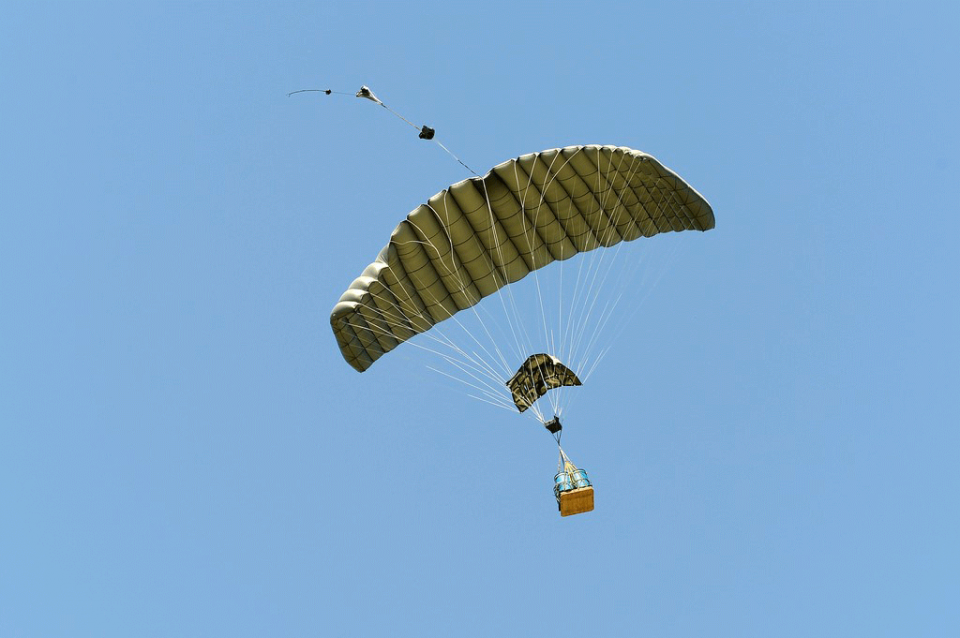CAMBRIDGE, MA—July 13, 2021—Draper recently delivered advanced guidance, navigation and control technology to the U.S. Army that enables the Joint Precision Airdrop System (JPADS) to operate in areas where signals from the Global Positioning System (GPS) network may be degraded or nonexistent. This new technology ensures that this critical autonomous resupply capability will be available to warfighters operating in contested environments.

JPADS is an autonomous airborne resupply system that leverages advanced technology to accurately deliver supplies at precise locations anywhere in the world.
Since GPS signals are subject to degradation and jamming, both of which affect the reliability of GPS information to JPADS, Draper has equipped JPADS with new sensors and enhanced software to enable autonomous flight comparable to when JPADS has good access to GPS.
Draper has a long history with the JPADS program and was responsible for the initial development of the guidance technology in partnership with the U.S. Army. Draper continues to work with the U.S. government and its partners to bring new capability into the system to ensure its reliability. The addition of these new capabilities is expected to ensure the systems can perform in near-peer contested environments.

“Evolving and expanding global challenges require the development and fielding of next-generation capabilities to ensure that the U.S. military is able to compete and win in complex operating environments,” explains Jonathan Cash, senior program manager in national security at Draper. “One significant challenge is being able to operate systems such as JPADS in GPS-denied environments. Draper developed this new technology for JPADS specifically for that reason.” Cash leads a team that builds on Draper’s six decades of experience in unmanned and robotic systems for air, land and sea.
JPADS is intended to provide increased tactical maneuverability and enable a sustainment capability to support multi-service and multi-national ground forces. Future research may include adding capabilities such as enabling JPADS to disperse smaller payloads, according to the Army.
The work is sponsored by the U.S. Army Combat Capabilities Development Command Soldier Center (DEVCOM SC), Natick, MA, Product Manager Force Sustainment Systems (PM FSS), Natick, MA and the U.S. Army Combat Capabilities Development Command Armaments Center (DEVCOM AC), Picatinny, New Jersey.


So, the Army is looking at this thing dispersing smaller payloads. Hmmm… If only someone had developed that idea 20ish years ago…
https://youtu.be/Ly7CrXiIrMA